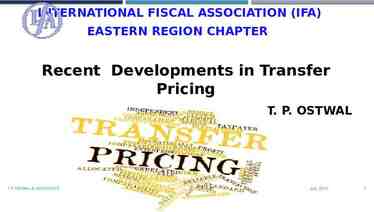New Commissioner Orientation
45 Slides8.74 MB
New Commissioner Orientation
Welcome! “You can do what I cannot do. I can do what you cannot do. Together we can do great things.” --Mother Teresa
Orientation Contents National service legislation CNCS structure and funding National service programs State Service Commission structure and activities Key events in national service history Commissioner resources
National Service Legislation The National and Community Service Act of 1990 Amended by the National and Community Service Trust Act of 1993 Amended by the Edward M. Kennedy Serve America Act of 2009
National and Community Service Trust Act of 1993 Established State Service Commission composition requirements, created the Corporation for National and Community Service, and more Details may be found on the CNCS website: www.nationalservice.gov/about/legislation
What is CNCS?
Why a Corporation? Part of an effort to streamline the federal government in the Clinton administration Features include: Board of Directors Performance-based workplans and assessments “Flatter” organizational structure Corporate donations Reduce red tape Allows CNCS to be more accountable to Congress and the public
CNCS Mission To improve lives, strengthen communities, and foster civic engagement through service and volunteering. www.nationalservice.gov
Guiding Principles of CNCS Put the needs of local communities first. Strengthen the public-private partnerships that underpin all of our programs. Use our programs to build stronger, more efficient, and more sustainable community networks capable of mobilizing volunteers to address local needs, including disaster preparedness and response. Measure and continually improve our programs' benefits to service beneficiaries, participants, community organizations, and our national culture of service. Build collaborations wherever possible across our programs and with other federal programs.
Guiding Principles of CNCS Help rural and economically distressed communities obtain access to public and private resources. Support diverse organizations, including faith-based and other community organizations, minority colleges, and disability organizations. Use service-learning principles to put volunteer and service activities into an appropriate context that stimulates life-long civic engagement. Support continued civic engagement, leadership, and public service careers for our programs' participants and community volunteers. Exhibit excellence in management and customer service.
CNCS Strategic Plan The current strategic plan may be found at www.nationalservice.gov/about/strategic-plan. The plan identifies these agency goals: Goal 1: Increase the impact of national service on community needs in communities served by CNCS-supported programs. Goal 2: Strengthen national service so that participants engaged in CNCS-supported programs consistently find satisfaction, meaning, and opportunity. Goal 3: Maximize the value we add to grantees, partners, and participants. Goal 4: Fortify management operations and sustain a capable, responsive, and accountable organization.
CNCS Structure Chief Executive Officer Board of Directors AmeriCorps State and National AmeriCorps VISTA Senior Corps Field Liaison AmeriCorps NCCC Social Innovation Fund Chief Strategy Officer Chief of Staff E xt er n al A ff ai rs G ov er n m en t R el ati o ns C hi ef O p er ati ng O ffi ce r Acc oun tabi lity and Ove rsig ht Info rm atio n Tec hno log y Chi ef Fin anc ial O ffic er Hu m an Ca pit al Re se ar ch an d Ev al ua ti on General Counsel
CNCS Funding President's Budget Request Congression al Budget Resolution Budget Enactment
CNCS Funding President's Budget Request Congression al Budget Resolution Budget Enactment
CNCS Funding President's Budget Request Congression al Budget Resolution Budget Enactment
Types of AmeriCorps State and National Prime Grantees 1. Direct Programs National or multi-state programs Programs managed by Indian Tribes Programs managed by US Territories Programs funded in states without a commission 2. State Service Commissions Professional staff Appointed commissioners
What are National Service Programs?
AmeriCorps Programs AmeriCorps NCCC State and National VISTA
National Civilian Community Corps
AmeriCorps State and National
Volunteers in Service to America
Senior Corps Programs Senior Corps FGP RSVP Senior Companion
Foster Grandparent Program
Retired Senior Volunteer Program
Senior Companion Program
What is a State Service Commission? A bipartisan or nonpartisan state entity, approved by CNCS, consisting of 15-25 members who are appointed by the Governor or chief executive officer of the state Commissioners are appointed to voluntary service, and they work with paid, professional staff to fulfill the service goals of the state
Commission Structure Appointed commissioners include: A Chairperson elected by the voting members A CNCS representative Membership defined in federal law Commission professional staff include: An Executive Director Program Officer(s) Fiscal Officer(s) Outreach Manager *Note that the commission staff titles will depend on the organizational structure.
Commission Responsibilities Commission Stewardship of Public Resources National Service Plan
Special Role of Commissions It is important to note that State Service Commissions may lead other significant functions within their states, including disaster response, state volunteer centers and networks, and more Commissions are invaluable partners in AmeriCorps grantmaking with CNCS
AmeriCorps Grant Terms and Conditions Issued by CNCS Guiding Principles General Program and Financial Grantee and Subgrantee
State Commission Members §2550.50 (b) Required voting members on a State Service Commission. A member may represent none, one, or more than one category, and each of the following categories must be represented: A representative of a community-based agency or organization in the state The head of the state education agency or his or her designee A representative of local government in the state A representative of local labor organizations in the state A representative of business An individual between the ages of 16 and 25, inclusive, who is a participant or supervisor of a service program for school-age youth, or of a campusbased or national service program A representative of a national service program An individual with expertise in the educational, training, and development needs of youth, particularly disadvantaged youth An individual with experience in promoting the involvement of older adults (age 55 and older) in service and volunteerism A representative of the volunteer sector
Organizational Structures Commission Host Agency Office of the Governor Other State Government Nonprofit
Commission in the Office of the Governor Operating office within structure of Governor’s Office or housed within a larger agency in the Governor’s Office Examples include commissions in Maryland, Florida, and Montana
Commission in Other State Government Stand-alone agency within state government or housed within a larger agency within state government Examples include commissions in Alaska, Indiana, and Kentucky
Commission in a Nonprofit Incorporated as 501c3 nonprofit organizations Examples include Nevada, Massachusetts, and Wyoming
A Context for National Service in America Excerpted from the Moral Equivalent of War, published in 1910: “If now there were, instead of military conscription, a conscription of the whole youthful population to form for a certain number of years a part of the army .To coal and iron mines, to freight trains, to fishing fleets, to dishwashing, clotheswashing, and window-washing, to road-building and tunnel-making, to foundries and stoke-holes, and to the frames of skyscrapers, would our youths be drafted off, according to their choice, to get the childishness knocked out of them, and to come back into society with healthier sympathies and soberer ideas. They would tread the earth more proudly they would be better teachers of the following generation.” --William James
A Context for National Service in America National service as transformational experiences: Service participants of all ages Communities and citizens in need In times of natural or man-made disaster
Key Events in National Service 1960s 1930s 1933-1942: Civilian Conservation Corps (CCC) 1961: Peace Corps created 1964: VISTA created; Senior Corps demonstration projects launched
Key Events in National Service 1980s 1970s 1973: Domestic Volunteer Service Act authorized Senior Corps programs 1989: White House Office of National Service and Points of Light Foundation created
Key Events in National Service 2000s 1990s 1990: National and Community Service Act 1992: NCCC created 1993: National and Community Service Trust Act; CNCS and AmeriCorps created 2007: First annual AmeriCorps Week 2009: Edward M. Kennedy Serve America Act
Key Events in National Service Beyond 2010s 2010: Social Innovation Fund launched 2011: CNCS 5-Year Strategic Plan published 2012: FEMA Corps launched
National Service Timeline The key events presented in this orientation represent only a brief glimpse of the long and rich history of national and community service. Please explore a more detailed national service timeline on the CNCS website: www.nationalservice.gov/about/who-we-are/our-history/natio nal-service-timeline
Additional Resources for Commissioners CNCS National Service Knowledge Network: www.nationalservice.gov/resources AmeriCorps Alums: www.americorpsalums.org The Association of America’s Service Commissions: http://statecommissions.org
Orientation Review National service legislation CNCS structure and funding National service programs State Service Commission structure and activities Key events in national service history Commissioner resources
Thank You!


















































